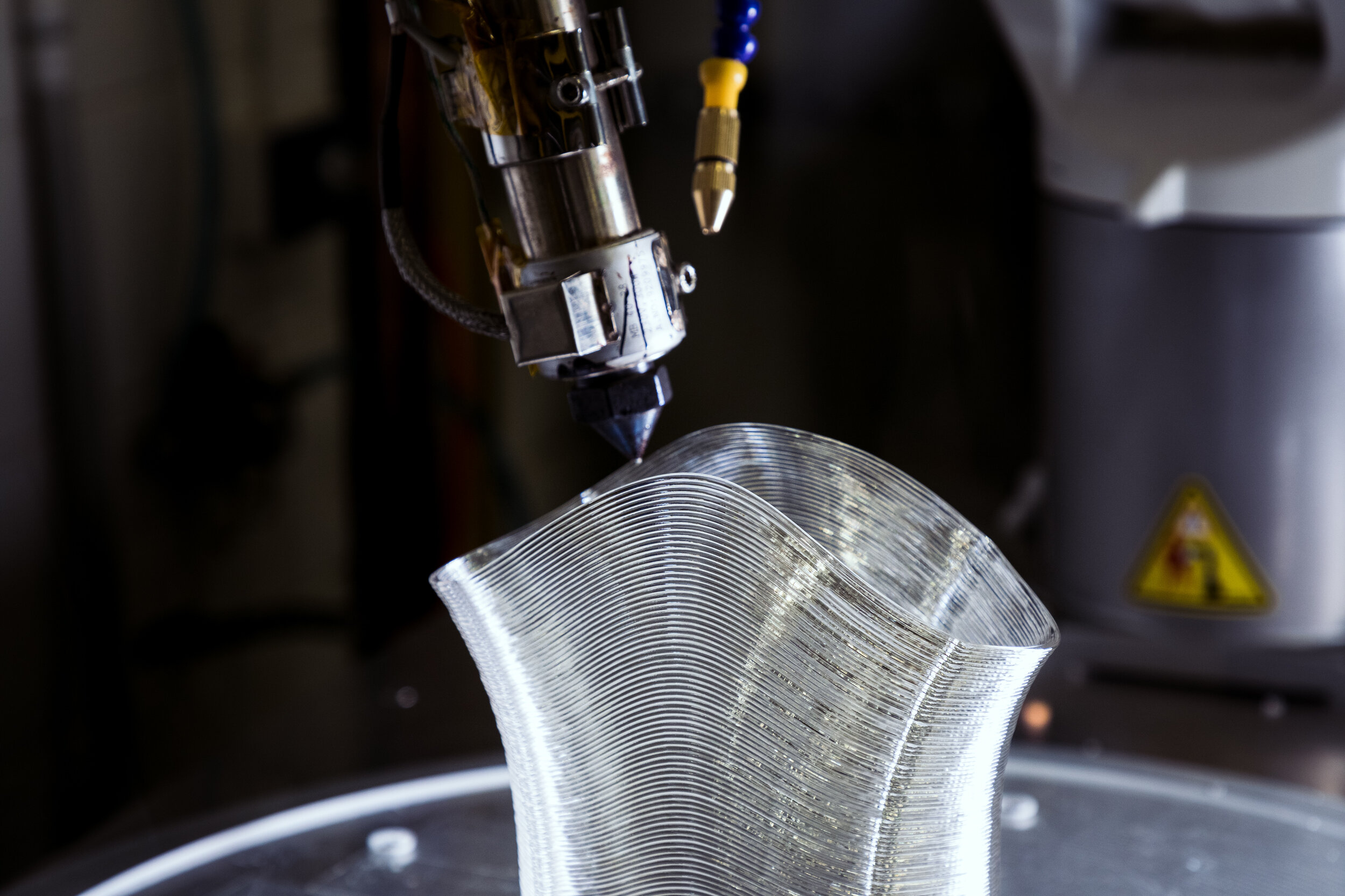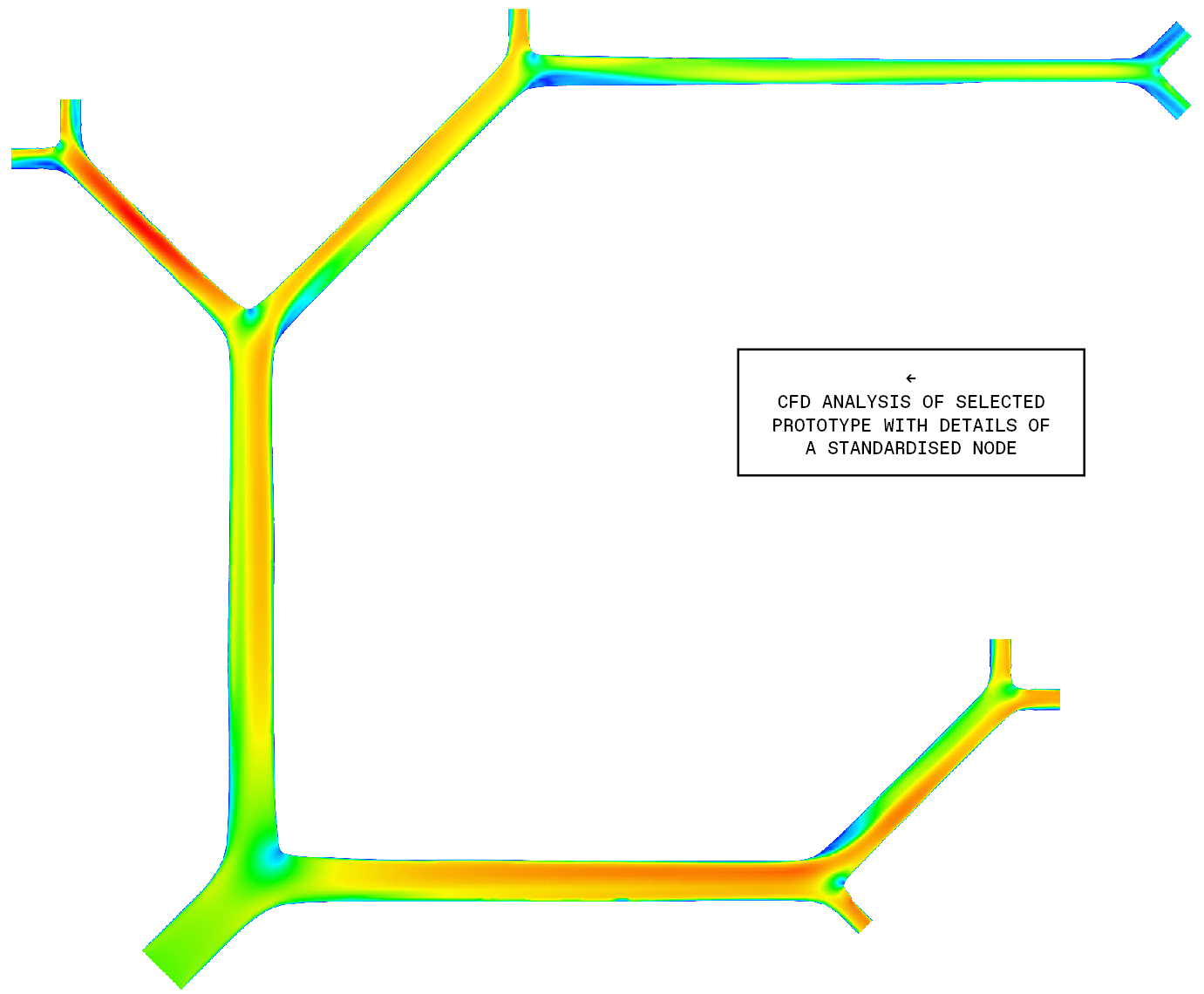
Inspired by nature,
shaped for air,
designed for change.
Introducing SR2.
SR2 is the world’s first robotically 3D printed air-diffusion system.
SR2 is the world’s first robotically 3D printed air-diffusion system. It is a radical approach to how we deliver air in existing buildings to ensure they stay relevant. In Australia, 98% of all buildings are existing. Retaining and retrofitting them is critical to mitigating climate change.

Discover
The construction industry contributes around 40% of global carbon emissions. Services account for approximately 33% of the total embodied carbon of a typical office building.*
*Source: The Footprint Company
SR2 is the result of a deep dive into the state of existing air delivery systems found throughout our built environment.
We found holistic change is required to the way we deliver and experience air in existing buildings and the way the system is designed and shaped.
In this, we saw an opportunity.

Behaviour of Air
Oversizing and redundancy practices could contribute as much as 15% of the total services carbon footprint.*
*Source: The Footprint Company
When analysing existing metal duct systems, it becomes apparent that their overall layout and components are not designed for air, but instead by what is possible and most cost effective to make.
The results are inefficient systems with poor airflow.
What if air-distribution systems could be designed and shaped for air? What if they were aerodynamic? What shapes would be ideal for optimised airflow? What can we learn from living organisms?

Materials
Using recycled plastic waste, we reduce embodied carbon by 90%.*
*Source: The Footprint Company
Despite a 6.4% fall in emissions in 2020 as a result of COVID-19 shutdowns, the world is still on track to a warming of 3.2°C by the end of the century. The production of materials alone accounts for 23% of global carbon emissions.
We need viable and low-carbon material alternatives for replacing steel as the predominant material in duct work.
What if we could build the future with the waste of today?

System Design
By optimising set-out and componentry, SR2 reduces length by 33% and more than halves the amount of fixings required, reducing time on install.
To date the overall system layout and sizing of current air-distribution systems are generic. Their component geometries are not designed for air, but instead optimised for and limited by the employed design tools and manufacturing process of steel.
What if we could change this by using advanced technology to design and make air-distribution systems that achieve a level of sophistication and complexity like those of natural systems?

Robotic 3D Printing
The flexibility of robotic 3D Printing enables components shaped for air, reducing SR2’s length, cross-sectional area and weight, saving both embodied carbon and operational energy.
Large-scale robotic 3D printing further extends the range of possibilities of conventional desktop 3D printing.
The application of robotic 3D printing to air-diffusion system design, enables the prefabrication of tailor-made components that are designed and optimised for airflow, the use of recycled materials, assemblies with sizeable savings in labour and material costs, tighter tolerances, increased performance and greater flexibility in their configurations during its operational life.
Scan the QR code or click View Fullscreen for an interactive mobile augmented reality experience that simulates the precise robotic gestures of an actual 3D print file.
To learn more about how this mobile AR experience was developed, see our blog post.

Living Lab
The BVN Sydney Studio has nearly
1km of ductwork serving its space.
75% of this system can be replaced by SR2,
saving over 90% in embodied-carbon.
Over time BVN’s 2000m² Sydney studio has evolved into a Living Lab; a real-world platform for full size prototyping, user testing and monitoring.
A 100m² zone of the studio was selected for replacing the existing tertiary (from VAV box to terminal) ducting and diffusers with SR2.
Our projections of the benefits of adopting SR2 across the full studio would be as follows; 13.21 tonnes of waste plastic used, replacing 54 tonnes of traditional ductwork (76% saving), and over 1 megaton reduction in embodied CO².
FAQs
Can SR2 be installed
in my office?
SR2 is suitable for any office with an open plan layout.
SR2 is designed for change and redefines the ecology of building services to support 21st century ways of working and the office of the future. The system can vary where necessary to adapt to the challenging and unpredictable nature of fit-out works in existing buildings.
Why 3D printing?
By 3D printing with recycled plastics, SR2 reduces embodied carbon by 90% and weight by 76%. The flexibility of the 3D print process allows for complex optimized parts at no additional cost.
It allows us to create forms inspired by nature and transforms messy duct-based air distribution systems into elements which contribute aesthetically to the spaces they serve, reducing reliance on carbon intensive, and expensive suspended ceilings.
Why does SR2’s form
look so complex?
SR2 is designed for air, not manufacturing limitations. The 3D printing process allows for aerodynamic forms with integrated porosity, to increase comfort. Optimised forms reduce cross section on average by 75%, length by 33% and operating energy by 10%.
Because very little manual labour is involved, we are able to deliver complex parts without increasing costs.
Is SR2 it difficult to install?
By standardising connections, seals, and fixings; and specialising for SR2’s use case of open ceilings, the system is more responsive to change, fully recyclable and reduces onsite labour by more than 50%.
Is SR2 time-intensive to design and set-out?
SR2’s 100% integrated digital workflow, assisted by machine learning, eliminates the inherent waste of a fragmented design process. Automating the process reduces design and documentation time, optimizes components and limits defects.
How does SR2 work from a fire perspective?
SR2 is not a duct system, but a ‘HVAC air dispersion System’ – we can look other products in the market for precedence in terms of use case and performance. At a base material level we are working with the PET polymer group, which is identical to polyester, which is a self-extinguishing material. As we work with raw plastic pellet – we are able to work with a plastics compounder, who will be able to specify what additives may or may not be required for fire performance.
We are also currently assessing the applicability of this technology to a broader use case. Watch this space!






















